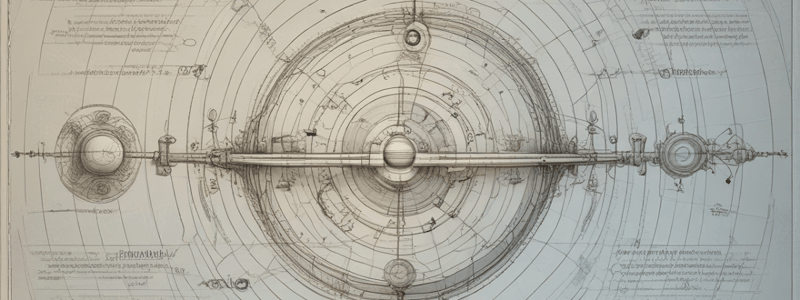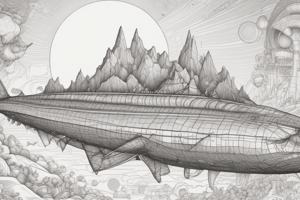Podcast
Questions and Answers
What is the primary goal of making scientific drawings?
What is the primary goal of making scientific drawings?
- To use various colors to make the drawing visually appealing
- To be as simple as possible but also as true to life as possible (correct)
- To make the drawing as complex as possible
- To showcase artistic skills
What is the recommended tool for making scientific drawings?
What is the recommended tool for making scientific drawings?
- A ruler alone
- Pencil with a sharpener (correct)
- Coloured pens or markers
- A paintbrush
How should smooth-edged specimens be drawn?
How should smooth-edged specimens be drawn?
- With fuzzy edges
- With broken lines
- With smooth unbroken lines (correct)
- With stippling
What technique is used to indicate the shape of underlying structures?
What technique is used to indicate the shape of underlying structures?
Why may symbols be used in scientific drawings?
Why may symbols be used in scientific drawings?
Flashcards are hidden until you start studying
Study Notes
Goals of Scientific Drawings
- The primary goal is to accurately represent specimens and convey information about their structure and function.
- Scientific drawings serve as a visual record that can enhance understanding and communication of scientific concepts.
Recommended Tools for Scientific Drawings
- Pencils, particularly fine-tipped ones, are recommended for detail and precision.
- High-quality paper and erasers are essential to allow for corrections and clarity.
Drawing Smooth-Edged Specimens
- Use clean, precise lines to illustrate smooth edges.
- Contour lines should flow gently to reflect the specimen's natural shape and curvature.
Indicating Underlying Structures
- Hatching techniques (parallel lines) are used to suggest texture and depth.
- These techniques help represent the shape of underlying structures while maintaining clarity in the drawing.
Use of Symbols in Scientific Drawings
- Symbols may be utilized to simplify complex elements, indicating specific features or materials without cluttering the image.
- They enhance comprehension and allow for quick reference in identifying components of the specimen.
Studying That Suits You
Use AI to generate personalized quizzes and flashcards to suit your learning preferences.




